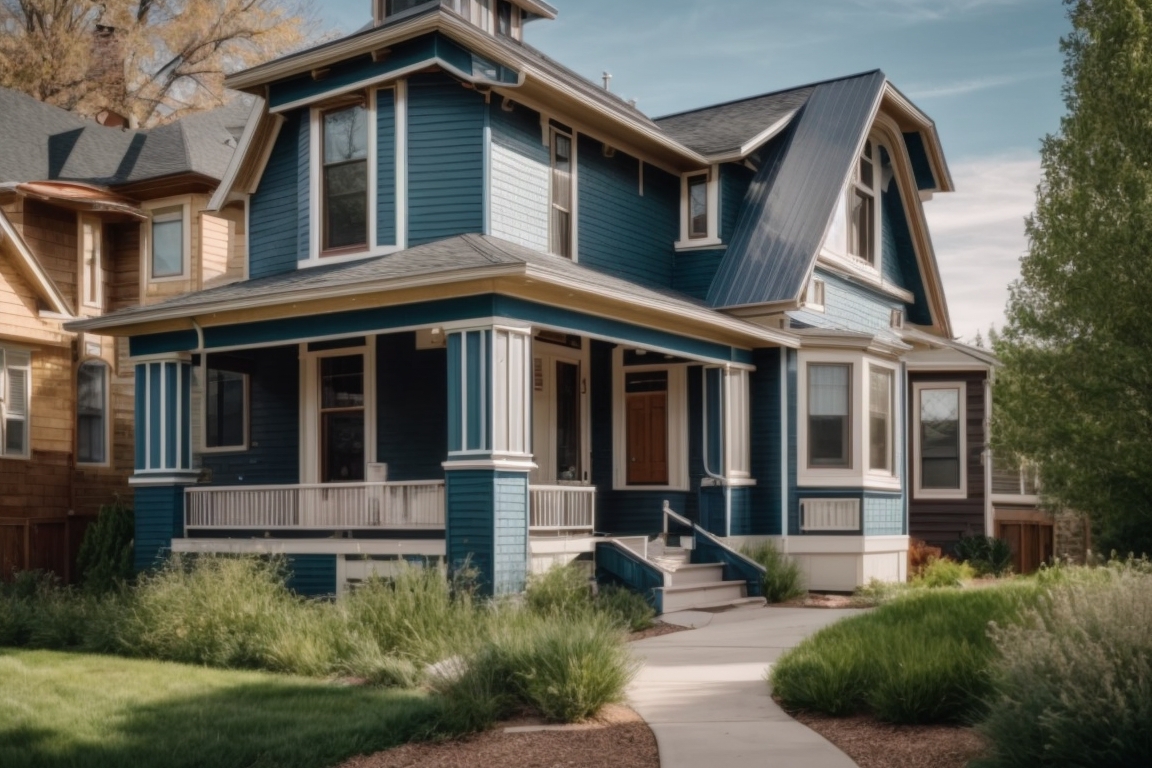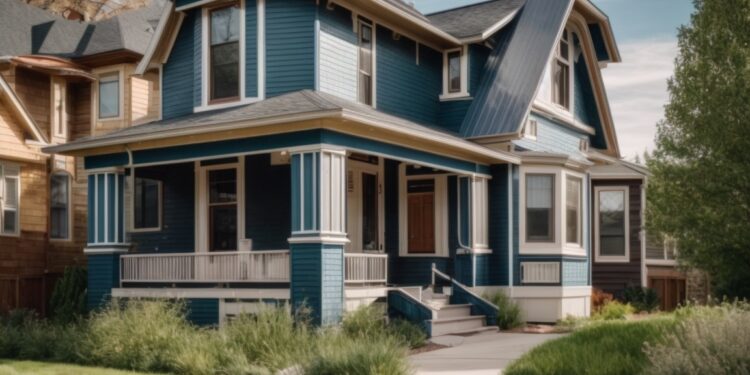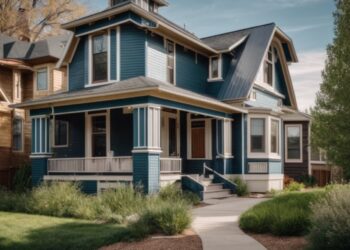Delving into the world of Victorian siding, this comprehensive guide aims to provide insight into its history, materials, styles, and importance in architectural preservation.
 .
.

Overview of Victorian Siding
Victorian siding refers to the exterior cladding or decorative elements of buildings constructed during the Victorian era, which spanned from the mid-19th century to the early 20th century. This style of siding is characterized by intricate details, ornate designs, and a focus on aesthetics.Popular Materials Used in Victorian Siding
During the Victorian era, common materials used for siding included wood, particularly cedar and redwood, as well as brick, stone, and stucco. These materials were often combined to create unique patterns and textures on the exterior of buildings.Key Characteristics of Victorian Siding Styles
Victorian siding styles are known for their elaborate trim work, decorative brackets, intricate moldings, and vibrant color schemes. Fish-scale shingles, spindle work, and ornate gables are also hallmark features of Victorian siding designs.Importance of Victorian Siding in Architectural Preservation
Victorian siding plays a crucial role in preserving the architectural history of the Victorian era. By maintaining and restoring original siding materials and designs, historic buildings can retain their unique charm and character, contributing to the cultural heritage of a community.Types of Victorian Siding
When it comes to Victorian siding, there are several different types to choose from, each with its own unique features and characteristics. Let's explore the various options available and compare their durability and maintenance requirements.Clapboard Siding
Clapboard siding is one of the most common types of Victorian siding. It features long, narrow boards that are installed horizontally on the exterior of a building. This type of siding is known for its classic look and timeless appeal. Clapboard siding can be made from wood, vinyl, or fiber cement, with wood being the most traditional option. While wood clapboard siding requires regular maintenance such as painting or staining, vinyl and fiber cement clapboard siding are more durable and low maintenance.Fish Scale Siding
Fish scale siding, also known as scalloped siding, is another popular choice for Victorian homes. This type of siding features overlapping rows of small, rounded shingles that resemble fish scales. Fish scale siding adds a unique and decorative touch to the exterior of a house. Typically made from cedar or redwood, fish scale siding is durable and resistant to rot and decay. However, it may require occasional painting or staining to maintain its appearance.Board and Batten Siding
Board and batten siding is a rustic and charming option for Victorian homes. This type of siding consists of wide vertical boards (boards) with narrow strips (battens) covering the seams between them. Board and batten siding can be made from wood, vinyl, or fiber cement. While wood board and batten siding requires more maintenance, vinyl and fiber cement options are more durable and require less upkeep.Shingle Siding
Shingle siding is a versatile and attractive choice for Victorian homes. This type of siding features overlapping rows of rectangular or octagonal shingles that create a textured and dimensional look. Shingle siding can be made from wood, vinyl, or fiber cement. Wood shingle siding requires regular maintenance to prevent rot and decay, while vinyl and fiber cement shingle siding are more durable and low maintenance options.Comparing Durability and Maintenance
In terms of durability, fiber cement siding is considered the most durable option for Victorian homes, as it is resistant to rot, insects, and fire. Vinyl siding is also a durable choice, with the added benefit of being low maintenance. Wood siding, while traditional and aesthetically pleasing, requires more maintenance to prevent rot, decay, and insect damage. Ultimately, the best choice of Victorian siding material will depend on your preferences, budget, and maintenance capabilitiesInstallation and Repair of Victorian Siding
Installing and repairing Victorian siding requires careful attention to detail and proper techniques to ensure the longevity and aesthetic appeal of your home.Steps for Installing Victorian Siding
- Prepare the surface by removing old siding and repairing any damaged areas.
- Measure and cut the siding panels to fit the dimensions of your home.
- Install the corner pieces and starter strip to provide a secure base for the siding.
- Begin installing the siding panels from the bottom up, ensuring they overlap correctly.
- Secure the panels with nails or screws, making sure they are evenly spaced and level.
- Finish the installation by adding trim pieces and caulking any gaps for a seamless look.
Tips for Proper Maintenance of Victorian Siding
- Regularly clean the siding with a gentle detergent and water to remove dirt and grime.
- Inspect the siding for any signs of damage, such as cracks or warping, and repair them promptly.
- Repaint or refinish the siding as needed to protect it from the elements and maintain its appearance.
- Avoid using harsh chemicals or power washers, as they can damage the siding material.
Common Issues with Victorian Siding and Repair Solutions
- Rotting or decay: Replace damaged sections of siding and address any underlying moisture issues.
- Warping or buckling: Secure loose panels and consider adding additional fasteners for reinforcement.
- Pest infestation: Treat affected areas with appropriate pest control methods and repair any entry points.
- Fading or discoloration: Repaint or refinish the siding with UV-resistant coatings to restore its color.
The Importance of Hiring Professionals for Victorian Siding
- Professionals have the expertise and experience to ensure proper installation and repairs, reducing the risk of costly mistakes.
- Professional contractors have access to specialized tools and materials needed for efficient and high-quality work.
- Hiring professionals can save you time and effort, allowing you to enjoy the benefits of well-maintained Victorian siding without the hassle.
Design Ideas and Inspiration
When it comes to Victorian siding, there are numerous design ideas and inspirations that can help elevate the look of your home. Whether you're looking to add a modern twist to a traditional design or enhance your curb appeal, Victorian siding offers a variety of options to choose from.Modern Twists on Traditional Designs
- Consider mixing materials like wood and metal to create a unique look that blends old and new.
- Opt for a bold color choice, such as navy blue or deep red, to make a statement while still honoring Victorian style.
- Incorporate geometric patterns or asymmetrical shapes to add a contemporary touch to the classic Victorian siding.
Enhancing Curb Appeal
- Use decorative trim and moldings to highlight architectural details and create a visually appealing facade.
- Choose a color palette that complements the overall style of your home and landscaping to create a cohesive look.
- Consider adding a front porch or balcony with Victorian-inspired railings to enhance the charm of your home.
Color Choices and Combinations
- Opt for soft pastel colors like pale pink, mint green, or lavender for a classic Victorian look.
- Experiment with contrasting colors like black and white or navy and cream to create a striking visual impact.
- Combine different shades of the same color for a monochromatic look that adds depth and dimension to your home's exterior.
Incorporating Victorian Siding into Contemporary Architecture
- Pair Victorian siding with modern elements like large windows, flat roofs, and minimalist landscaping for a seamless integration.
- Use Victorian siding as an accent on specific areas of your home, such as gables or dormers, to add character without overwhelming the overall design.
- Mix and match different siding materials to create a dynamic look that combines Victorian charm with contemporary flair.














